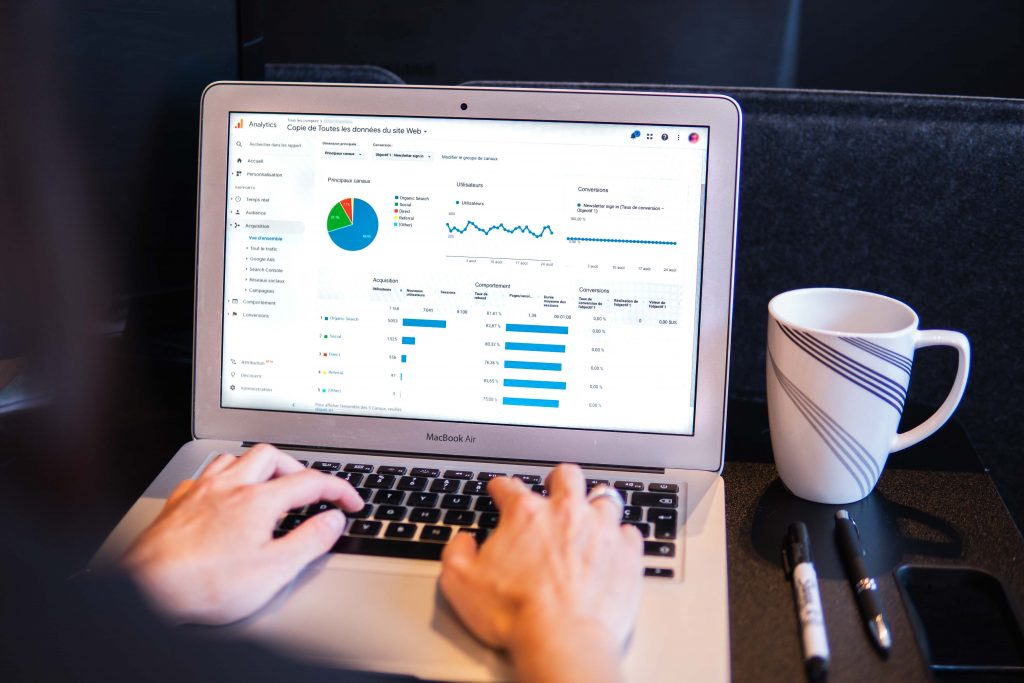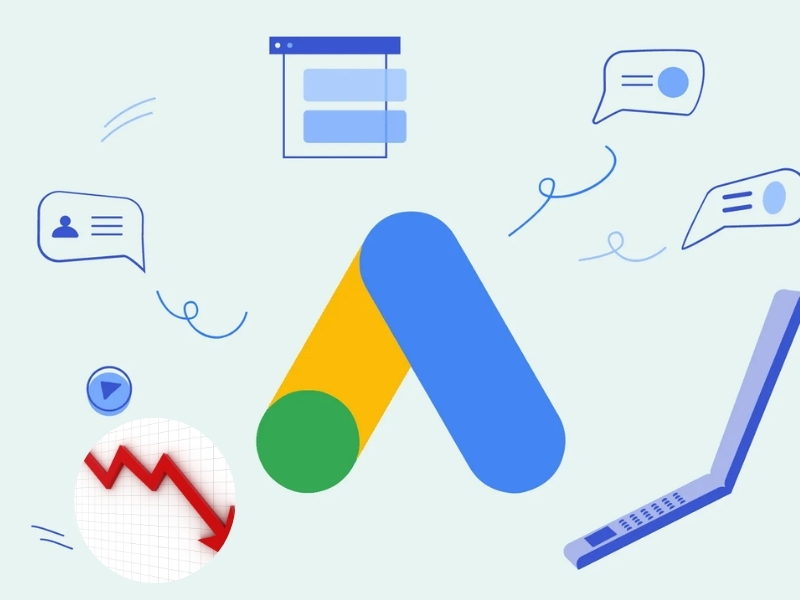Are you about to perform a technical SEO audit for the first time? Confused, where to start? Don’t worry; you’re not alone — every minute, 175 new websites are created, approximately 252,000 websites daily.
The competition in every industry is getting higher and higher. Any disruptive error in your website can damage your ranking and business growth, and this is where a technical SEO audit comes into the picture.

Soure: WordStream
A technical SEO audit is nothing but a website’s health check. It analyses the technical aspects of the website to ensure whether it aligns with the search engine parameters. Due to the competition and enhancing the user experience, Google and other search engines update their algorithms regularly.
Conducting a technical SEO audit is imperative to identify potential threats and sort them out to satisfy the search engines and users. This article will help you learn what to look for in a technical SEO report and the top tools to perform it.
The top tools to conduct a technical SEO audit
Here are some of the tools that will help you conduct a technical SEO audit and saves you time:
- Semrush.
- Ahrefs.
- Google Analytics.
- Google Search Console.
- Google Pagespeed Insights.
- Google Lighthouse.
- Screaming Frog.
- Sitebulb.
Things to look for in a technical SEO audit
There are different types of SEO audits: Content audits, backlink audits, competitive audits, schema mark-up audits, and more. But a technical SEO audit is different.
It analyses the technical aspects of your website, such as performance, user experience, crawlability, and other significant elements. Here are the top things to look for in a technical SEO audit:
 Image credit: Ahrefs via Twitter
Image credit: Ahrefs via Twitter
1. Indexation and crawlability
The process of organising web pages and storing them in search engine databases is called indexing. Crawling is the search engine’s ability to access and crawl the web page to index.
If a site has a crawlability issue, then the web pages or the website won’t be indexed nor ranked on the search engine. A technical SEO audit enlightens you on the issue to scrutinise and address them.
Here are some reasons that could stop your website from crawling and indexing:
- An incorrect command in the robot.txt file, restricting search engines from crawling specific website sections.
- Incorrect, invalid, or no XML sitemap makes it harder for the search engines to crawl deeper categories or products that are not correctly linked.
- Duplicate content where search engines ignore similar content pages.
- Incorrect canonical tags that instruct search engines to deindex certain pages.
Using tools like Semrush, Screaming frog, or Ahrefs, you can easily spot why your pages are not ranking, how many pages have issues, how many pages are blocked from indexing, etc.
2. Site structure
A good site structure enables search engines and users to understand and find pages easily on your website. When it comes to helping them both, the sitemap carries the responsibility. A website should have two kinds of sitemaps:
- XML sitemap: It is created for the search engine to guide them to crawl through the website and all its pages accurately and timely.
- HTML sitemap: It is designed especially for the users to understand the site’s overall structure and find specific pages easily.

A good site structure should allow users to reach the desired landing pages in no more than 3-4 clicks from the homepage. Here is an example of an ideal website architecture:
Source: Onwardseo
If the number of clicks increases, the user will get frustrated and might leave the site. A consistent and organised site structure improves the overall user experience.
Similarly, the URL structure should be consistent and user-friendly. For example, if a visitor searches for printed t-shirts in an eCommerce store, the URL should be like: domain.com/t-shirt/.
Hence, with a technical SEO audit, you can find the site’s architectural issues and fix the errors on the sitemap and robot.txt file to boost rankings.
3. Canonical tags
Canonical tags are vital to let Google know the master page to crawl, index, and rank. If you have similar pages on your website with the same content, use valid canonical tags to help search engines detect the master page.
Adding canonical tags signals search engines to index and rank the correct version from a collection of similar pages in the search engine results. You should add your canonical tag in the heading area of the HTML. Here is an example of a canonical tag:

Source: Moz
While doing a technical audit, you should spot the canonical issues and sort them out. Here are some of the best practices while implementing canonical tags:
- Implement the correct domain protocol (HTTPS).
- Tag only legitimate duplicate or near-identical content.
- The URL you include should not have a redirect.
- Don’t forget to include canonical tags in accelerated mobile pages (AMP).
- Indicate which URL version should be indexed, for example, the www version or the non-www version.
4. Internal linking
Internal linking enhances the user experience and improves the website’s average dwell time. Hyperlinking the anchor text to your primary landing pages helps the search engine crawl, index, and rank essential pages.
Linking to relevant pages allows the user to click them, gather more information, and spend more time on your website. On most websites, several broken links impact the user experience negatively, and these can be either:
- Internal broken links: Pages linking to each other on your site have a broken link.
- External broken links: Pages on your site linking to an external site with a broken link.
Search engines and users hate broken links because it leads to poor user experience. It is vital to check the broken internal links and remove them or connect to a different relevant source to improve the user experience.
Apart from broken links, there is another issue known as an orphaned page. An orphan page is a page that has no links leading to them. That means the page doesn’t have access or links to other pages that direct to this page.
Even if it is listed in the sitemap, it may not be indexed by search engines. By conducting a technical SEO audit, you can quickly figure out the broken internal link and orphaned pages to fix them.
5. Security
Security builds trust. People fear sharing their sensitive details on websites that don’t take adequate security measures to protect user information. A website with HTTP (hypertext transfer protocol) is not encrypted and is not safe.
Any third-party attacker can easily hack the system and steal user information. A website should use a secured server on the HTTPS protocol. HTTPS protocol uses the SSL certificate from a third-party vendor to confirm its legitimacy.
An SSL certificate is also one of the ranking signals for Google. HTTPS protocol websites display a lock icon next to the URL. Here are some of the security-related issues that a website might have:
- An expired certificate.
- Certificate registered to the wrong domain name.
- No server name indication.
- No HSTS server support.
- Mixed content (HTTP and HTTPS).
- Non-secure pages with password inputs.
- Sitemap XML links to HTTP pages.
- Internal link to an HTTP page.
- No redirects or canonicals to HTTPS URLs from HTTP versions.
- Old security protocol version.
You should carefully look for website security issues because they directly impact user experience. Google and other major search engines take website security seriously.
6. Mobile-friendliness
Since July 1, 2019, Google has enabled mobile-first indexing for all websites since 56.89% of the global internet traffic is from mobile. Responsive web design (RWD) is one of the best ways to make your website mobile-friendly.

Source: deravia
You can also use accelerated mobile pages (AMP), specific pages designed especially for mobile devices to improve the mobile browsing experience of your website users. You can easily spot mobile user experience-related issues using a technical SEO audit.
7. Duplicate content
Identical, similar, or thin content pages can affect your website’s overall ranking. Duplicate content issues can happen if your website uses the same content on different pages.
Tools such as Siteliner help you detect duplicate content issues on your website quickly and accurately. Similarly, having thin content pages also signals to Google that the website is not user-friendly.
If you think having thin content or similar content pages on your site is necessary, you can keep them using a canonical tag. You can pick a master page among a set of URLs and point the canonical tag to that page. This will enable the search engines to ignore the similar pages and instead index and rank the master page.
To boost site authority, you can organise your site content using pillar pages and topic clusters which is the best way to improve site rankings via content.
8. Page speed
Page speed is one of the crucial search engine ranking factors. Google and other search engines prioritise page speed. If your page doesn’t load below 3-4 seconds, you’ll face a 4.42% decrease in conversion for every extra second delay.

Source: PageSpeed Insights
Using the PageSpeed Insights tool, you can identify your website’s current page speed-related issues and suggestions to fix them. Here are some of the issues that lead to higher page loading time leading to decreased user experience:
- Large HTML page size.
- Uncompressed images.
- Redirects chains and loops.
- Excessive HTTP requests.
- Messy coding.
- Not using caching techniques.
- Bad hosting service.
- Not using CDN.
With the help of a page speed audit, you can find the issues impacting your site speed and take steps to optimise them for a faster site loading time.
9. Redirects
Redirects eat up crawl budgets. The more a link redirects, the less the search engines follow it. A link should not have more than three redirects. Sometimes a URL can go through multiple redirects before it lands on the destination URL, known as a redirect chain or loop.
Redirect chains slow the crawling, decrease page speed, and damage link equity. You should also ensure that correct redirect codes are added.
For instance, you should add 301 permanent redirects on pages not present on the site but with internal and external links. Having too many redirects might also disrupt rankings. You can easily spot the faulty redirects with a technical audit and fix them.
10. Robots.txt
The purpose of the robots.txt file is to exclude pages from crawling with disallow commands. There are certain pages, such as privacy policy, cookie policy, terms, and conditions, etc., that web admins restrict crawling.
Adding accurate instructions in the robots.txt file instructs the search engines to disallow the crawling of such pages. Sometimes, primary landing pages get deindexed due to incorrect robots.txt codes.
The role of the robots.txt file is to:
-
- Disallow search engine bots from accessing private folders.
- Specify where your sitemap is.
Stop the bots from slowing down your server.
When you look at the robot.txt files, look for the Disallow:/ command. The command tells search engines not to crawl certain pages. You should also ensure all the target landing pages are allowed for indexing.
Sometimes, developers might have the page in a staging environment for getting feedback and approval — and forget to switch the page to allow for indexation.
11. Backlinks
Backlinks are one of the most vital signals that search engines use to rank web pages. The more quality backlinks your website has from relevant and high authority sites, the greater the chances of ranking higher in the SERP.
Suppose your website has too many backlinks from low-quality and spammy websites, the chances of a penalty increase. A technical SEO audit lets you analyse the complete backlink profile.
You can quickly analyse the spammy backlinks and disavow them to keep your site safe and improve your ranking. While conducting a site audit, you should check the quality of the domains linking to the site, the anchor text, the type of link (dofollow or nofollow), and the number of links.
You can also analyse the competitors’ backlink profiles to compare and identify the missing linking opportunities.
Summing up
A website is a digital store of your business. If it has technical flaws, it will impact the growth of your business and revenue. Make sure to run regular technical site audits to improve the overall user experience of your website.
SEO is a continuous process. You can’t do it once and wait for the results to happen. A comprehensive technical SEO audit by an experienced SEO agency is always helpful. Need help with technical SEO? Then get in touch with Warren Digital today!





